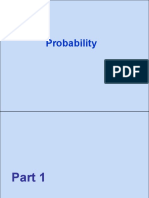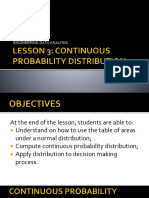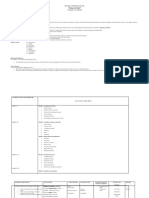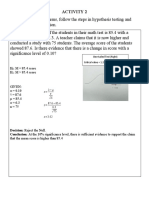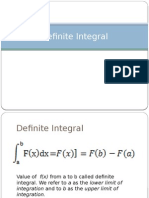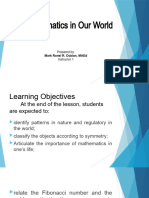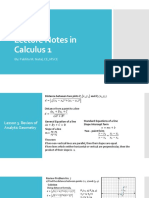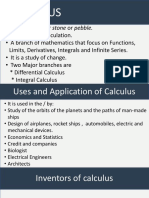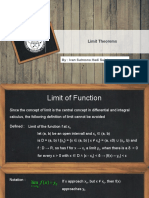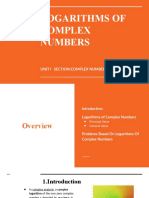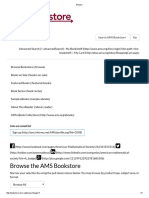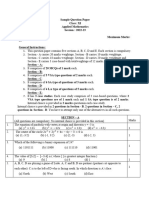0% found this document useful (0 votes)
427 views31 pagesCalculus for Engineering Students
This document provides an overview of a basic calculus module for a bridging program in mechanical engineering. It includes information about the student taking the course, instructor details, and outlines chapters on functions and limits, and differential calculus. The chapters cover topics like functional notation, operations on functions, limits, limits of polynomial, rational and radical functions, and derivatives. Formulas and examples are provided to illustrate key concepts.
Uploaded by
Jesse Camille Ballesta ValloCopyright
© © All Rights Reserved
We take content rights seriously. If you suspect this is your content, claim it here.
Available Formats
Download as PDF, TXT or read online on Scribd
0% found this document useful (0 votes)
427 views31 pagesCalculus for Engineering Students
This document provides an overview of a basic calculus module for a bridging program in mechanical engineering. It includes information about the student taking the course, instructor details, and outlines chapters on functions and limits, and differential calculus. The chapters cover topics like functional notation, operations on functions, limits, limits of polynomial, rational and radical functions, and derivatives. Formulas and examples are provided to illustrate key concepts.
Uploaded by
Jesse Camille Ballesta ValloCopyright
© © All Rights Reserved
We take content rights seriously. If you suspect this is your content, claim it here.
Available Formats
Download as PDF, TXT or read online on Scribd
/ 31



